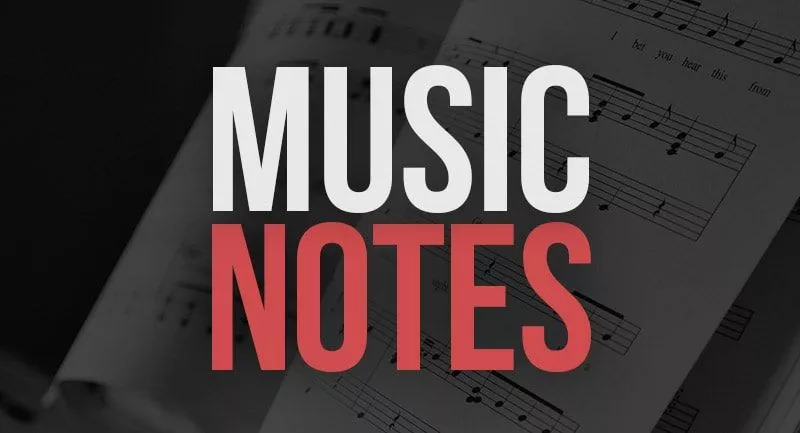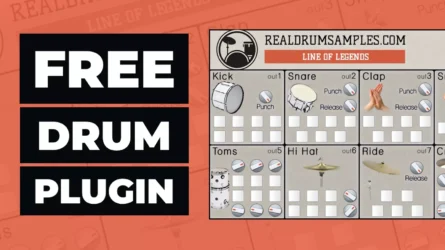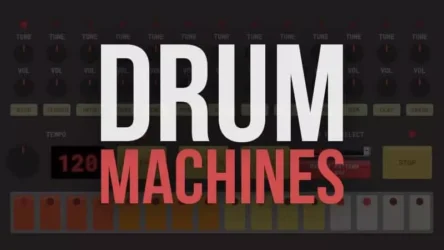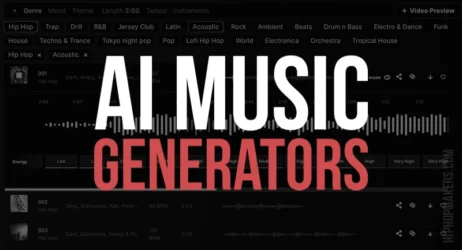This simple guide will answer what is a music note, provide examples of the different musical notes, and explain how to read notes in music.
- What is a Music Note
- Examples of Musical Notes
- What Are The 12 Musical Notes
- How Many Types Of Notes Are There
- How Are Music Notes Defined
- How Do You Read Notes
- What Does Every Music Note Mean
- Overview Of Musical Notation
What is a Music Note?
A music note is a symbolic representation of the musical sound. The notes in music are like the alphabet of the musical language. They are simply the foundation of all music, and they can represent the pitch and duration of a sound in musical notation.
Just like we use the alphabet in our English language, music notes can be thought of as the alphabet of a musical language.
In Western Music, there are only 12 notes. Musical notes are named after the first 7 letters of the English Alphabet: A, B, C, D, E, F, G
You can think of the piano keys to better understand the notes. There are 7 notes that correspond to those 7 letters of the English alphabet from A to G.

There are also 5 notes that lie between them, and they are:
- A# or Bb
- C# or Db
- D# or Eb
- F# or Gb
- G# or Ab
Here the ‘#’ represents the sharps that indicate that a note is raised. Whereas the ‘b’ symbol represents the flats that indicate that a note is lowered.
Please note that in this system, especially while considering the piano, the sharpness of one note is harmonically identical to the flat of the note above it. This means that A# is the same tone as Bb, C# is the same tone as Db, etc.
It is also important to consider that there are no sharps or flats between B and C or between E and F.
Music notes that don’t have any sharps or flats, which mean all the white keys on the piano keyboard, are called Natural notes. The black keys on the piano keyboard are either the notes with sharp or flats.
The distance between any two notes that are next to each other is called a half step. Each half-step is at the same distance. For example, the distance between E and F is the same as the distance between Bb and B.
On the other hand, the distance between two half steps, for example, the distance between the C and D, is nothing but what we call the whole step.
Related: What Is A Music Staff?
What Are Some Musical Note Examples?
Here are some examples of musical notes:
- Whole Note
- Half Note
- Quarter Note
- Sixteenth Note
Related: What is a Meter in Music
What Are The 12 Musical Notes?
The 12 music notes in Western music:
- A
- A# or Bb
- B
- C
- C# or Db
- D
- D# or Eb
- E
- F
- F# or Gb
- G
- G# or Ab
How Many Types Of Notes Are There?
Musical notes can vary in duration, and when they are written on the sheet music, the notes of different lengths are represented in different ways.
In Western music sheets, usually, the music sheet gets divided into measures. Each of these measures generally contains four beats.
Here are some of the types of notes in music:
- Whole Note
- Half Note
- Quarter Note
- Eighth Note
- Sixteenth Note
- Thirty-Second Note
- Sixty-Fourth Note
- Double Whole Note
How Are Music Notes Defined?
Music notes are defined through a fascinating system of symbols that make up the language of music. Each note corresponds to a specific pitch, denoted by a note head-on sheet music. The note head’s placement on the staff, a system of five horizontal lines, indicates the pitch of the note, with higher notes placed on higher lines or spaces.
Furthermore, the duration a note should be played is determined by the shape and color of the note head. A filled note head, for instance, represents a shorter note, like a quarter note, while an empty note head often signifies a longer note, such as a half or whole note. Additional symbols like stems and flags can further indicate the note duration.
In musical notation, a key signature defines the tonality of the music, meaning it sets the ‘home base’ for the notes within a piece. For instance, a composition in the key of C Major will predominantly feature notes from the C Major scale.
Notes can also be defined by their frequency, with each note corresponding to a specific frequency measured in Hertz. For instance, the note A above middle C typically corresponds to a frequency of 440 Hz. The precise frequency of a note can vary depending on the tuning system used, but the relative relationships between notes remain consistent.
From reading sheet music to understanding musical compositions’ structure and sound, knowing how music notes are defined is crucial. These symbolic representations, encompassing pitch, duration, and frequency, allow musicians to translate written music into the beautiful, emotive soundscapes we all enjoy. Music notes serve as a universal language, allowing the communication and expression of musical ideas across time and space.
How Do You Read Notes?
In order to read notes, it is important to have a complete basic understanding of the musical staff and other related things.
Staffs are the foundation of written musical language, and it is made up of five lines and four spaces.
We number the lines from 1-5, starting from the bottom line. On the other hand, we number the spaces from 1-4, starting from the bottom space.
When notes are written on the staff, they are either written on the lines or on the spaces between them.
Now, there should be some way to relate the musical alphabet to the lines and spaces on the staff so that we can know which note corresponds to each line or space.
This is achieved by using a clef, which is a symbol placed at the beginning of a staff.
Each line and space in the musical staff corresponds to a musical pitch that is determined by the clef.
There are usually two clefs:
- Treble Clef
- Bass Clef
The treble clef is also called ‘G-clef’. On the piano, it is used to represent the notes in the upper portion of the piano keyboard.
- The music note names on the spaces of the treble clef: F-A-C-E
- The music note names on the lines of the treble clef: E-G-B-D-F
The F-A-C-E is easy to remember. You can just remember it as “FACE”.
But to remember the E-G-B-D-F, you can remember it using this mnemonic: “Every Good Boy Does Fine”.
Now, the bass clef, in the case of piano music, is used to denote the lower portion of the piano keyboard.
- The note names on the spaces of bass clef: A-C-E-G
- The note names on the lines of bass clef: G-B-D-F-A
The A-C-E-G can be remembered with the mnemonic: “All Cow Eat Grass”.
On the other hand, to remember G-B-D-F-A can be remembered using the mnemonic “Good Boys Do Fine Always”.
There is also a concept of ledger lines that are nothing but the lines used to notate the pitches above or below the regular lines and spaces of the staff.
For example, the ‘Middle C’ is located on a ledger line between the treble clef and the bass clef staff.
What Does Every Music Note Mean?
When musicians play the music, they have to know how long they have to play each sound. The composers of the music tell them about these using the different note symbols.
For example, if there’s a whole note (whose symbol is like a small oval-shaped zero), then it means that it will last for four counts.
Similarly, if there’s a half note, then it means that it will last for 2 counts.
| Whole Note | 4 Beat |
| Half Note | 2 Beats |
| Quarter Note | 1 Beat |
| Eighth Note | 1/2 Beat |
| Sixteenth Note | 1/4 Beat |
Overview Of Musical Notation
Musical notes, the building blocks of melodic music, are at the heart of every musical composition. These notes, symbolized by note heads on sheet music, form the very essence of musical notation. To read music effectively, understanding the first fourteen letters of the alphabet, which denote note names, is crucial.
In music theory, notes can share the same pitch, and hence be part of the similar pitch class. Written music often displays two notes of the same pitch class together, illustrating the use of harmony. The key signature on music sheets sets the ‘home base’ for all the notes, whether it’s a cheerful C major scale or a more somber Bb minor scale.
Different note values, such as the eighth notes and the double whole note, tell musicians how long to play each note. They might have the same duration, but their presence in the musical phrases could vary. The note head filled, for example, indicates a shorter duration compared to when the note head is empty.
Interestingly, the first note in any musical scale, like the C in the C major scale, sets the tone for the rest of the musical phrases. Smaller range note systems, on the other hand, might limit the range but offer unique sonic experiences. These systems often have notes with the same value but different frequencies.
Notation systems also include signs like the bar line and natural symbols, which have specific roles in the grammar of musical notations. From the rhythm of percussion instruments to the harmonies of a choir, each note found on the page contributes to the complete system of written music.
In conclusion, a musical note is more than just a symbol on a piece of sheet music; it’s a powerful force that carries the emotion, rhythm, and harmony of our favorite musical compositions. Whether you’re playing music or simply listening, remember that each note, no matter how short or long, carries its unique magic. Happy reading, playing, and enjoying the world of music notes!
I hope you found this information on music notes helpful.
If we missed anything, please share it in the comments.




